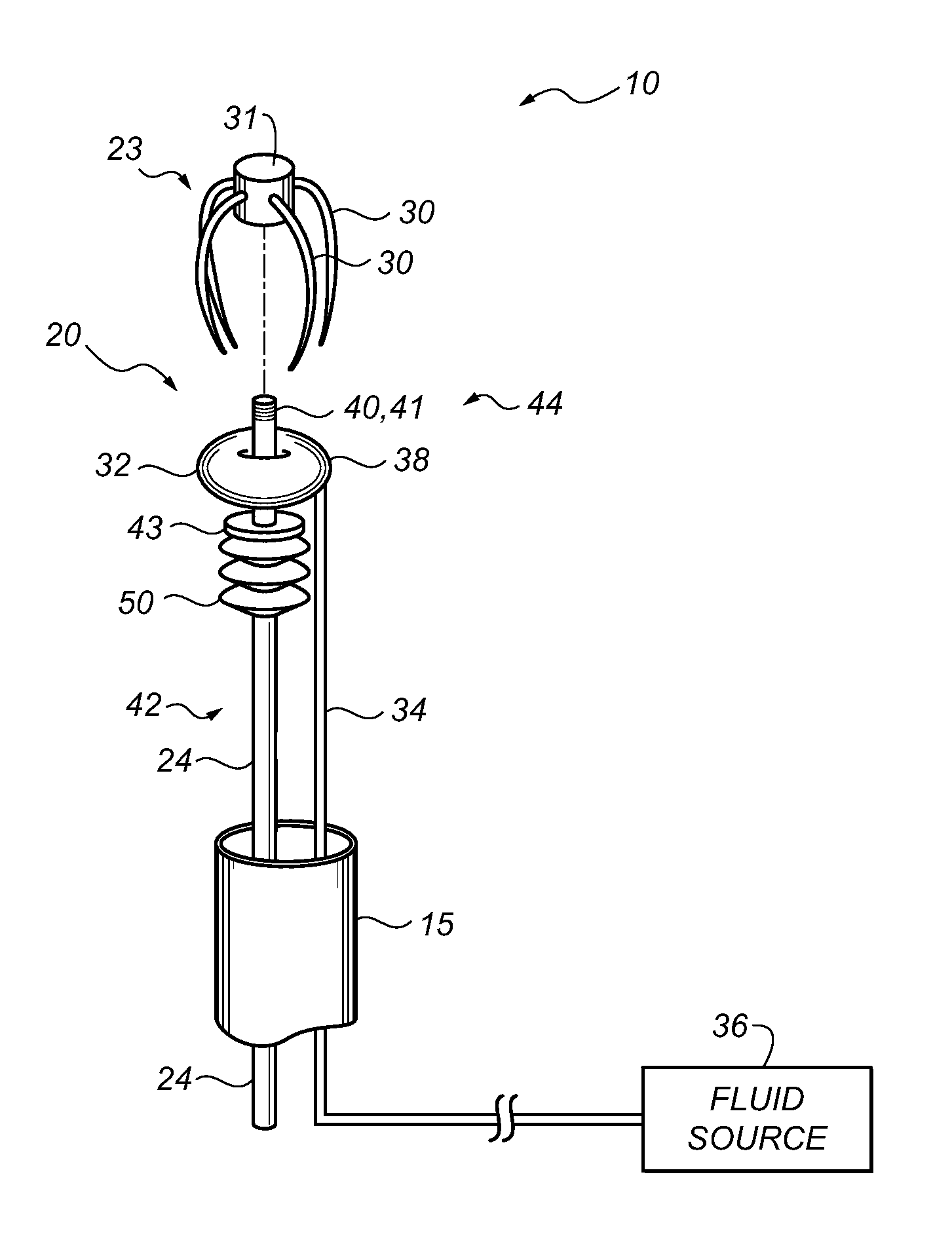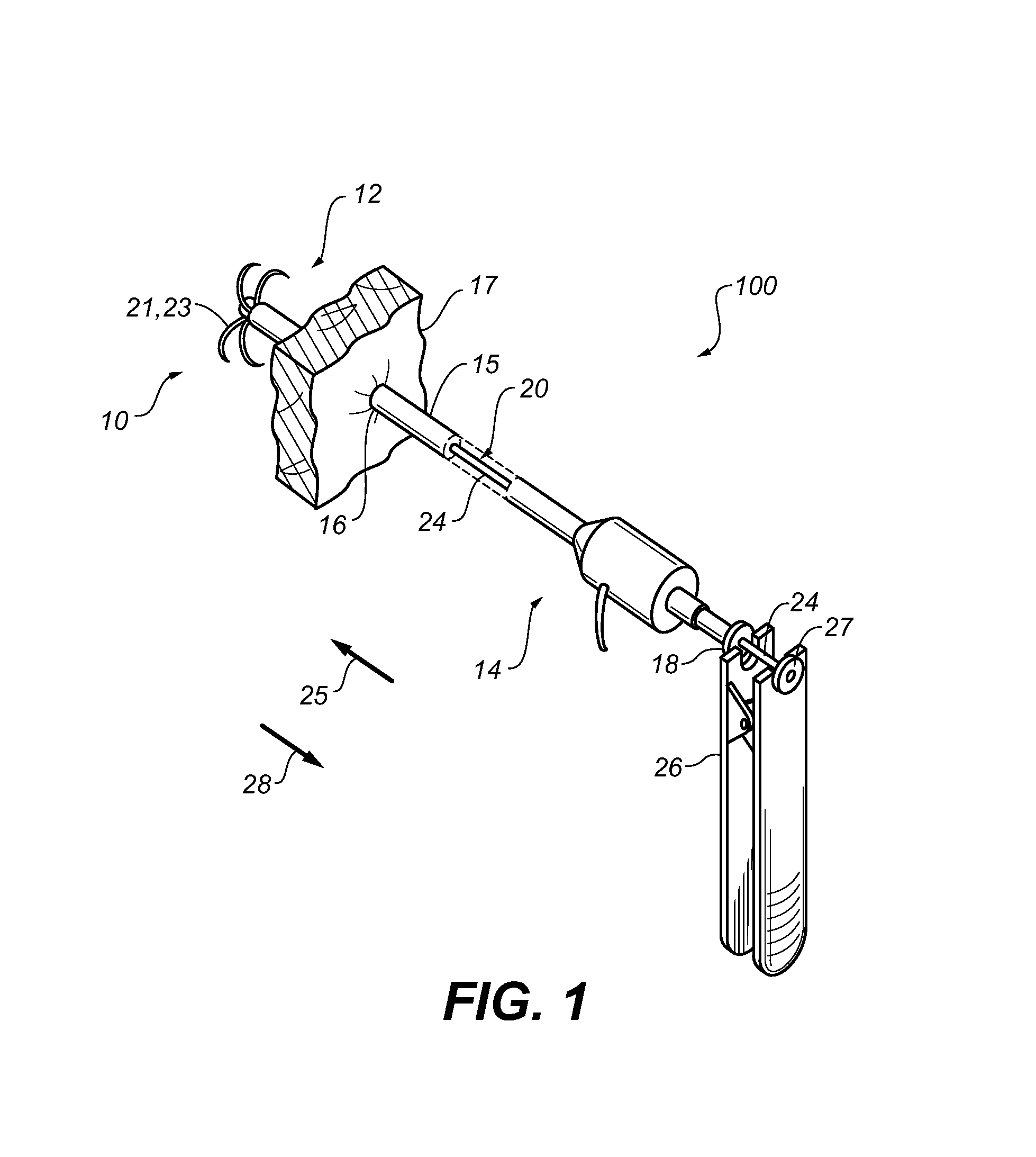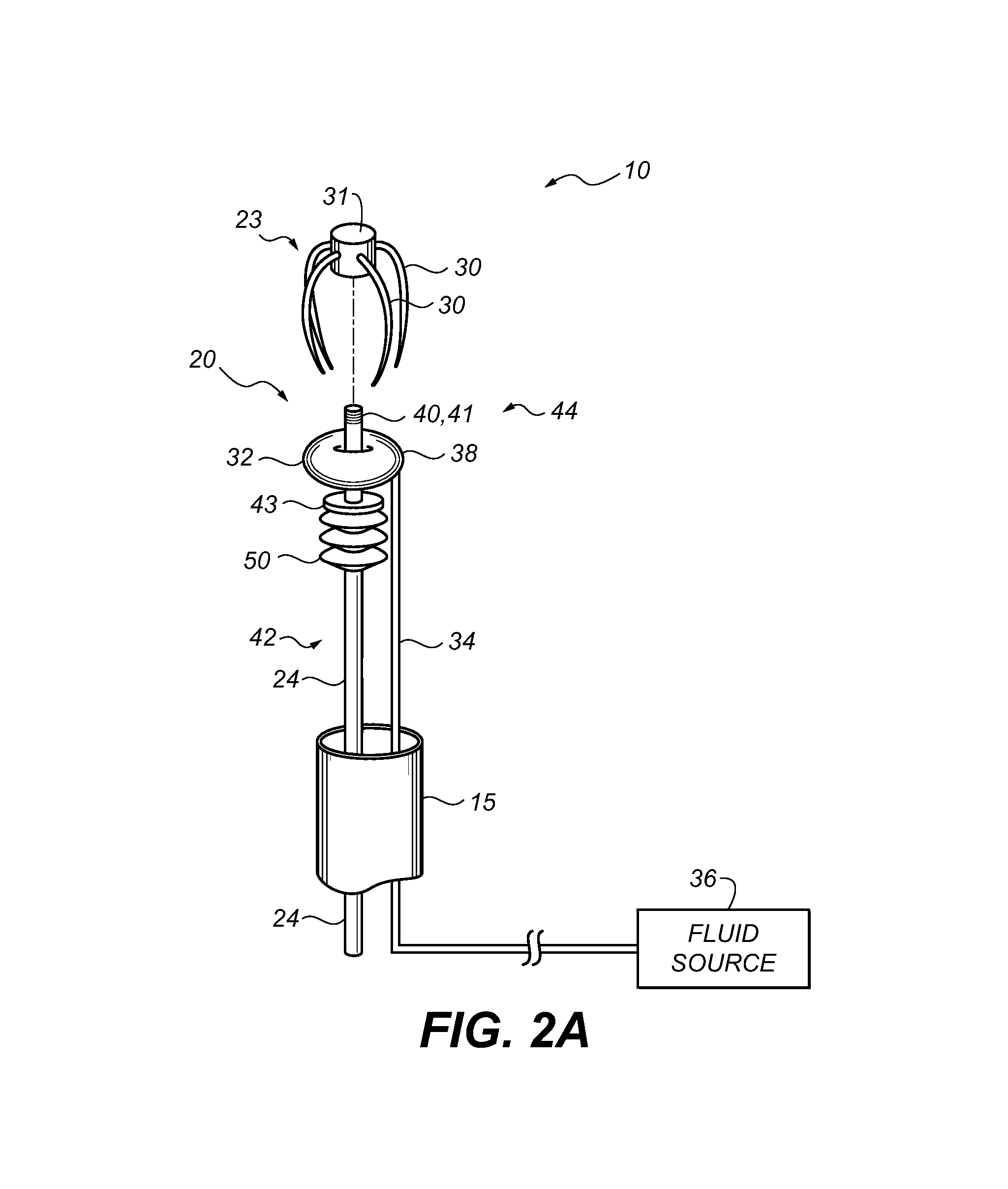Closing openings in anatomical tissue
a tissue and opening technology, applied in the field of surgery, can solve the problems of not sealing well, the closure device is only suitable for thin walled body tissues, and creates a marginal closure, and achieves the effect of reducing the distal portion angular deviation
- Summary
- Abstract
- Description
- Claims
- Application Information
AI Technical Summary
Benefits of technology
Problems solved by technology
Method used
Image
Examples
Embodiment Construction
[0058]In the following description, certain specific details are set forth in order to provide a thorough understanding of various embodiments of the invention. However, one skilled in the art will understand that the invention may be practiced without these details. In other instances, well-known structures have not been shown or described in detail to avoid unnecessarily obscuring descriptions of the disclosed embodiments.
[0059]Referring to FIG. 1, a medical system 100 including a closure device 10 according to an example embodiment is inserted into an anatomical cavity 12 such a cavity in the heart via catheter 14. A tubular member 15 is shown inserted into a first opening 16 that leads through a tissue wall 17 to anatomical cavity 12. In this example embodiment first opening 16 has been formed in tissue wall 17 with a perforating member or instrument (not shown). Various perforating members can be used to form first opening 16 in tissue wall 17. For example, puncturing members s...
PUM
 Login to View More
Login to View More Abstract
Description
Claims
Application Information
 Login to View More
Login to View More - R&D
- Intellectual Property
- Life Sciences
- Materials
- Tech Scout
- Unparalleled Data Quality
- Higher Quality Content
- 60% Fewer Hallucinations
Browse by: Latest US Patents, China's latest patents, Technical Efficacy Thesaurus, Application Domain, Technology Topic, Popular Technical Reports.
© 2025 PatSnap. All rights reserved.Legal|Privacy policy|Modern Slavery Act Transparency Statement|Sitemap|About US| Contact US: help@patsnap.com



